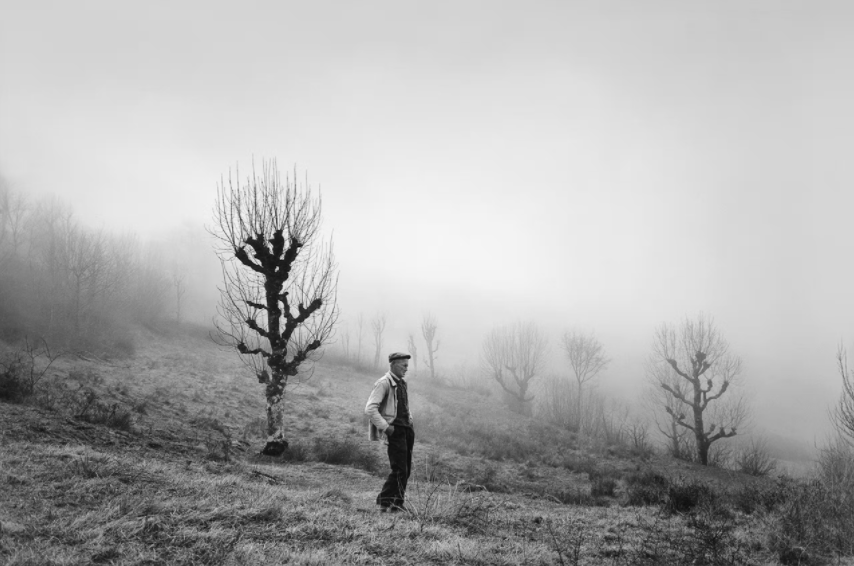La Vita Moderna is the largest exhibition ever held of the works of Raymond Depardon, the artist who has profoundly revitalized the world of contemporary images, starting back in the 1970s.
In the exhibition area of the Triennale Milano, patrons may appreciate a new way of playing with dimensional contrasts and having a close encounter with them.
La Vita Moderna — the title chosen for the solo exhibition of French photographer and filmmaker Raymond Depardon — is presented by Triennale Milano and Fondation Cartier pour l’art Contemporain.
On display, 300 photographs and two films. The exhibition having been specifically created for Milan — through many of his most emblematic series — reveals how much Italy inhabits the work of this artist.
Constantly searching for the ideal distance from them, Raymond Depardon approaches his subjects with discretion and humility
As a young reporter with the Dalmas agency, in 1966 he was one of the co-founders of the legendary Gamma photo agency. About a decade later, Depardon began working with Magnum Photos.
Presenting himself as “a passenger of [his] time,” he experimented with different ways of approaching the world, (first with photography, then filmmaking) placing the image at the service of a simple, unique, often direct narrative.
Whether he is tagging along with a politician on an election campaign or a farmer in his daily life, whether he is visiting a courthouse or a mental institution, Depardon has the ability to stand back and make room for the subject.
Depardon doesn’t chase the defining moment, preferring what is real over what is sensational. This way of experiencing the world, which he initially expressed through photojournalism, and from the end of the 1970s, through more personal photographic series, has awarded Depardon a special place in the history of photography and cinema.
The exhibition La Vita Moderna shows the richness of Depardon’s work, the diversity of his subjects and the coherence of his journey through eight photographic series, two films and the books he has published.
Borrowing the title from the film that concluded the Profils Paysans trilogy in 2008, the exhibition leads the visitor through a succession of the doubts that run through all of Depardon’s work.
The dualism between monochrome and color, between faces and landscapes, between ancestral land and modernity, does not lead to polarization, but rather reveals careful attention to the world, an open approach to the diversity of our times.
The first series in the exhibition, Errance (1999-2000), is also the leitmotif of the entire exhibition; a movement towards an elsewhere that is already there, a continuity beyond borders. Images of roads and thoroughfares, streets and rail tracks, where the journey becomes a wandering around. These all give life to landscapes that have been deliberately stripped of anything that could indicate a precise location.
Italy occupies a special and recurring place in the geographies of the margins of the world that characterize Depardon’s entire body of work. It is in Italy, in fact, that the artist has created several series, one of these being Piemonte (2001), in which he develops an “art of proximity,” highlighting the transalpine geographical and cultural continuity. Far from investigating the differences, it is through the reminiscences of French landscapes that Depardon perceives those of the Turin region.
In the photographs from the Communes (2020)series, just as with an echo, the villages of the Mediterranean hinterland on the other side of the Alps from Piedmont reveal cobbled streets and houses with cracks along the walls, offering a timeless image of these areas of southern France which have miraculously escaped a shale gas extraction project later abandoned.
His photographs also capture and bear witness to a political and ideological dimension. This insight may also be found in the collection which closes off the exhibition, namely San Clemente (1977-1981). Here, encouraged by Franco Basaglia, a pioneer of modern psychiatry, Depardon photographed life in the psychiatric institutes of Trieste, Naples, Arezzo and Venice. He created a shocking reportage on the eve of the adoption of Law 180, in 1978, destined to revolutionize the Italian psychiatric hospital system.
The dualism between monochrome and color, between faces and landscapes, between ancestral land and modernity, does not lead to polarization, but rather reveals careful attention to the world
The film San Clemente (1980), shot in the asylum on the Venetian island shortly before it was shut down, continued the exploration of the frontiers of madness and addressed at patients that humanistic gaze which characterizes all of the photographer’s work.
The exhibition space is thus transformed into a place of reflection on the great challenges of our times. Hence the decision by Triennale Milano and Fondation Cartier to dedicate more than 1,300 square meters of exhibition area to the work of a photographer-filmmaker who travels the world, through cities and the countryside, giving voice to its inhabitants and casting a humanist gaze on the world. Constantly searching for the ideal distance from them, Depardon approaches his subjects with discretion and humility. He patiently builds a relationship with people or places, gives voice to those who have none, shows each landscape as the site of a human experience and sees the world in a different light through the lens of a camera.
La Vita Moderna was conceived with the participation of artist Jean-Michel Alberola, who has given the exhibition his own rhythm. Together with set designer Théa Alberola, Jean-Michel has also introduced color into the spaces. The exhibition design is rhythmed by monumental prints taken from the Errance series, which invites us to explore the relationship with the landscape and participate in the search for the most suitable distance to be held from the subject. In his paintings, Jean-Michel Alberola often spills color beyond the space of the canvas, letting color escape onto the large painted walls. In the spaces of the Triennale, the two artists have together found a new way of exploring with dimensional contrasts and creating an interaction with the visitor.
Sveva Riva

